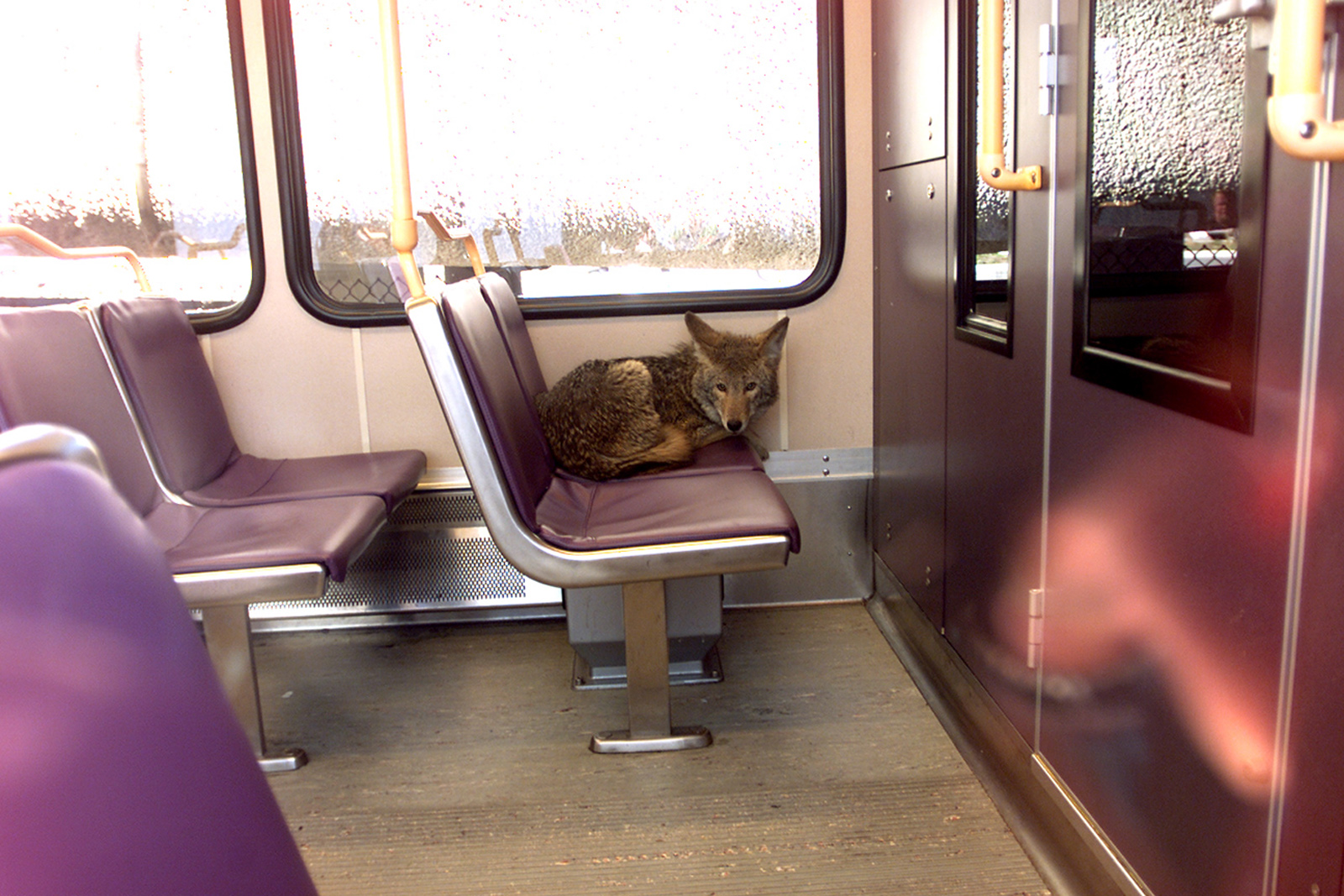Coyote, << KY oht or ky OH tee, >> is a wild member of the dog family. It is known for its eerie howl, usually heard during the evening, night, or early morning.
Coyotes once lived primarily in western North America. However, they now inhabit much of the United States, Canada, and Mexico, and even parts of Central America. The coyote lives in a variety of environments, including deserts, mountains, prairies, and urban communities. It is sometimes called the prairie wolf or brush wolf.
Loading the player...Coyote pups
Adult coyotes vary in color from light yellow or yellowish-gray to brownish-yellow. Their fur may be tipped with black. The coyote has large, pointed ears and a bushy tail. An adult coyote measures about 3 to 4 1/2 feet (1 to 1.4 meters) long, including its 11- to 16-inch (28- to 41-centimeter) tail. It stands about 1 1/2 to 2 feet (0.5 to 0.6 meter) high and weighs from 15 to 50 pounds (7 to 23 kilograms). Most coyotes live alone or in pairs, but some form groups of three or more.
Most female coyotes first mate when they are about 2 years old. They have a pregnancy period of 60 to 63 days. In spring, the female usually gives birth to three to six pups. A newborn coyote weighs from 7 to 10 ounces (200 to 275 grams). It is born blind, but its eyes open within two weeks. The mother provides milk for her young until they are 6 or 7 weeks old. By that time, the pups have begun to eat prey and other foods supplied by their parents. Most coyote pups can care for themselves by late summer, when they leave the parents.
Loading the player...Coyote
Coyotes feed chiefly on rabbits and on rodents, such as gophers, mice, prairie dogs, rats, and squirrels. Coyotes also prey on antelope, deer, goats, sheep, and the pets of urban residents. Coyotes eat insects, small birds, and reptiles as well. During the winter, many coyotes in northern regions feed on the remains of large dead animals, such as cattle and elk. In some areas, coyotes eat juniper berries, mesquite beans, watermelons, and other fruits for a few weeks of the year.

Some ranchers dislike coyotes because the animals kill cattle, sheep, and other livestock. Other people, however, think coyotes help keep rodent populations under control and are valuable for that reason. Some people hunt and trap coyotes for sport. Coyote pelts were used to make coats and to trim parkas or other clothing.
